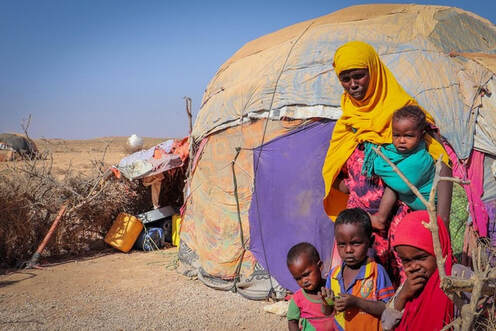 Australian politics: Glass half full?
Australian politics: Glass half full? Graham Ring reflects on the 2019 Australian Federal Election
On election day, the people of Australia spoke loudly and clearly, leaving no room for doubt about their priorities. They roared as one, in a voice that echoed from Queensland to all corners of the land:
“We Want More Stuff!”
“We don’t care much for climate change and the need to protect the environment.”
“We are not interested in the plight of refugees and asylum seekers, beyond the thought that we don’t want them to have what is rightfully ours.”
“We feel the unemployed are letting as down, and we have no interest in increasing the pitifully low level of unemployment benefit.”
“We don’t want our taxes to be spent overseas. We have had the dumb luck to be born in one of the wealthiest countries on earth and we intend to wallow in it.”
“We believe that the sectors we participate in are entitled to greater government subsidies – which should be funded by taking money from the sectors we don’t participate in.
“We want our taxes to go down and our incomes to go up.”
“This will enable us to Buy More Stuff.”
It’s impossible to avoid the conclusion that most Australians vote in their own short-term self-interest. “Under which party will I be better off?” is the key question. More esoteric concerns about the kind of community we want to be, and the responsibility we have as custodians of the planet, can take a back seat.
The Australian middle-class seems to be infected with an entitlement mentality. Despite the fact that our material standard of living has increased enormously in the last fifty years we still want more. A lot more.
As has often been observed, the accumulation of Yet More Stuff somehow doesn’t provide any lasting satisfaction. Clive Hamilton provides much evidence to support this view in his thoughtful book Growth Fetishpublished in 2003 by Allen & Unwin.
Australians are rarely moved to seriously examine other options like:
The Australian Labor Party – and the labour movement more broadly – was perhaps the single greatest force for good in Australia in the twentieth century. Mighty victories were won. We saw the establishment of one of most progressive social security systems in the world – now being allowed to run down. We saw the introduction of age-pensions and disability pensions, and housing assistance. We saw parliament pass laws to protect the health and safety of people in their workplaces. We saw a public health care system which is the equal of any in the world. The value of these contributions can never be diminished.
However, the ALP faces a desperate battle to remain relevant in the face of the complex, shifting issues that confront us in the twenty-first century. Labor is hopelessly compromised by the electoral realities of having to gain the support of the We Want More Stuff brigade. Today it is the Greens who offer more in the way of a vision for the future. Is it conceivable that these two progressive parties can find a way to unite and fight the good fight together?
Lobby groups like Get Up have also have a key role to play, with their demonstrated ability to react quickly and cleverly to developments. They are both legitimate and purposeful in a pluralist society. There presence is valuable because there is much to be done
The Federal Election 2019 was a victory only for mediocrity and consumerism.
Graham Ring is a Darwin based writer and journalist.
On election day, the people of Australia spoke loudly and clearly, leaving no room for doubt about their priorities. They roared as one, in a voice that echoed from Queensland to all corners of the land:
“We Want More Stuff!”
“We don’t care much for climate change and the need to protect the environment.”
“We are not interested in the plight of refugees and asylum seekers, beyond the thought that we don’t want them to have what is rightfully ours.”
“We feel the unemployed are letting as down, and we have no interest in increasing the pitifully low level of unemployment benefit.”
“We don’t want our taxes to be spent overseas. We have had the dumb luck to be born in one of the wealthiest countries on earth and we intend to wallow in it.”
“We believe that the sectors we participate in are entitled to greater government subsidies – which should be funded by taking money from the sectors we don’t participate in.
“We want our taxes to go down and our incomes to go up.”
“This will enable us to Buy More Stuff.”
It’s impossible to avoid the conclusion that most Australians vote in their own short-term self-interest. “Under which party will I be better off?” is the key question. More esoteric concerns about the kind of community we want to be, and the responsibility we have as custodians of the planet, can take a back seat.
The Australian middle-class seems to be infected with an entitlement mentality. Despite the fact that our material standard of living has increased enormously in the last fifty years we still want more. A lot more.
As has often been observed, the accumulation of Yet More Stuff somehow doesn’t provide any lasting satisfaction. Clive Hamilton provides much evidence to support this view in his thoughtful book Growth Fetishpublished in 2003 by Allen & Unwin.
Australians are rarely moved to seriously examine other options like:
- Moving away from gung-ho development, particularly the wanton exploitation of our finite natural resources.
- Considering the possibility that a slightly reduced ’standard of living’ doesn’t have to equate with a decline in our well-being.
- Commissioning a broad-based panel to review the $38 billion Australia spends on defence each year, to examine whether a proportion of this money could be more effectively spent elsewhere.
- Seeking a more secular society.
The Australian Labor Party – and the labour movement more broadly – was perhaps the single greatest force for good in Australia in the twentieth century. Mighty victories were won. We saw the establishment of one of most progressive social security systems in the world – now being allowed to run down. We saw the introduction of age-pensions and disability pensions, and housing assistance. We saw parliament pass laws to protect the health and safety of people in their workplaces. We saw a public health care system which is the equal of any in the world. The value of these contributions can never be diminished.
However, the ALP faces a desperate battle to remain relevant in the face of the complex, shifting issues that confront us in the twenty-first century. Labor is hopelessly compromised by the electoral realities of having to gain the support of the We Want More Stuff brigade. Today it is the Greens who offer more in the way of a vision for the future. Is it conceivable that these two progressive parties can find a way to unite and fight the good fight together?
Lobby groups like Get Up have also have a key role to play, with their demonstrated ability to react quickly and cleverly to developments. They are both legitimate and purposeful in a pluralist society. There presence is valuable because there is much to be done
The Federal Election 2019 was a victory only for mediocrity and consumerism.
Graham Ring is a Darwin based writer and journalist.


